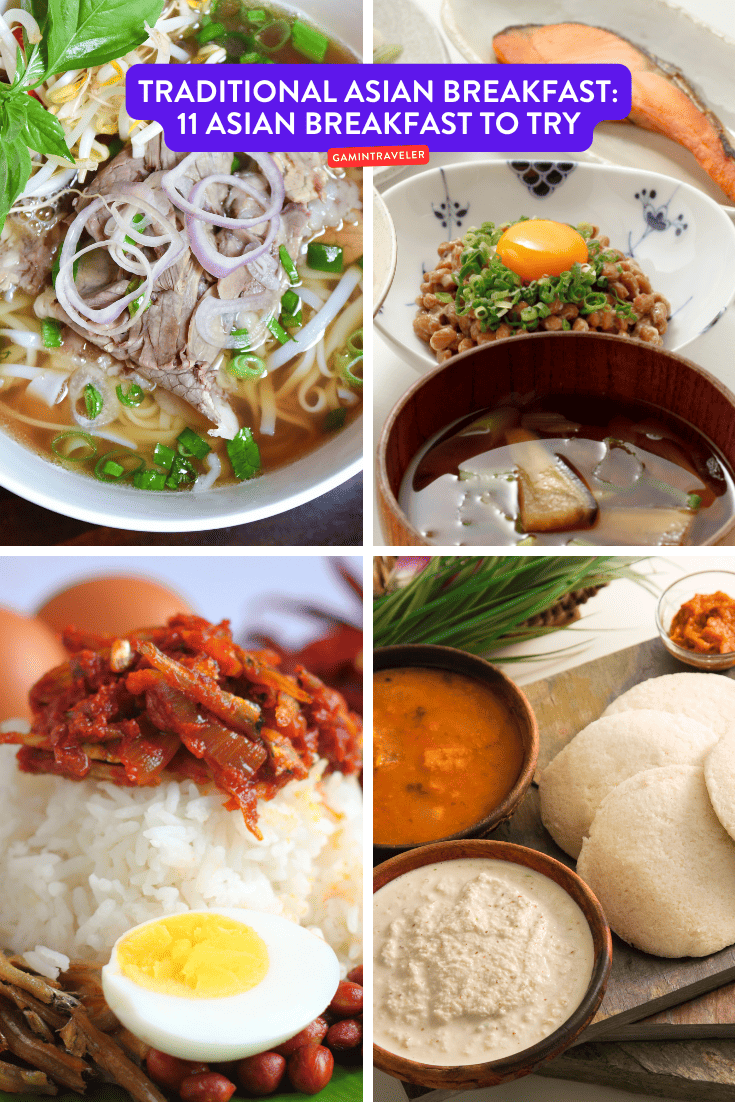
Traditional Breakfast In Asia – 11 Asian Breakfast To Try – Looking at discovering traditional Asian breakfast deeper? Let’s dive into this post.
The vast continent of Asia is home to a diverse array of cultures, traditions, and flavors. Breakfast, the first meal of the day, is no different.
A traditional breakfast in Asia isn’t merely a hurried meal consumed before rushing out the door; it’s a rich tapestry of flavors, ingredients, and cooking methods that reveal a lot about each country’s food culture. Let’s embark on a culinary journey exploring traditional Asian breakfasts.
Related Travel Guides:
- Malaysian Breakfast
- Breakfast in Indonesia
- Singapore Breakfast
- Best Travel Insurance for Digital Nomads in Asia
Traditional Breakfast In Asia – Asian Breakfasts Across Asia
Asian Food Culture and Asian breakfast recipes are definitely one of the best and most known cuisine around the world. Let’s dive in on all these traditional Asian breakfast across several countries and cultures.
China: Congee and Youtiao Congee
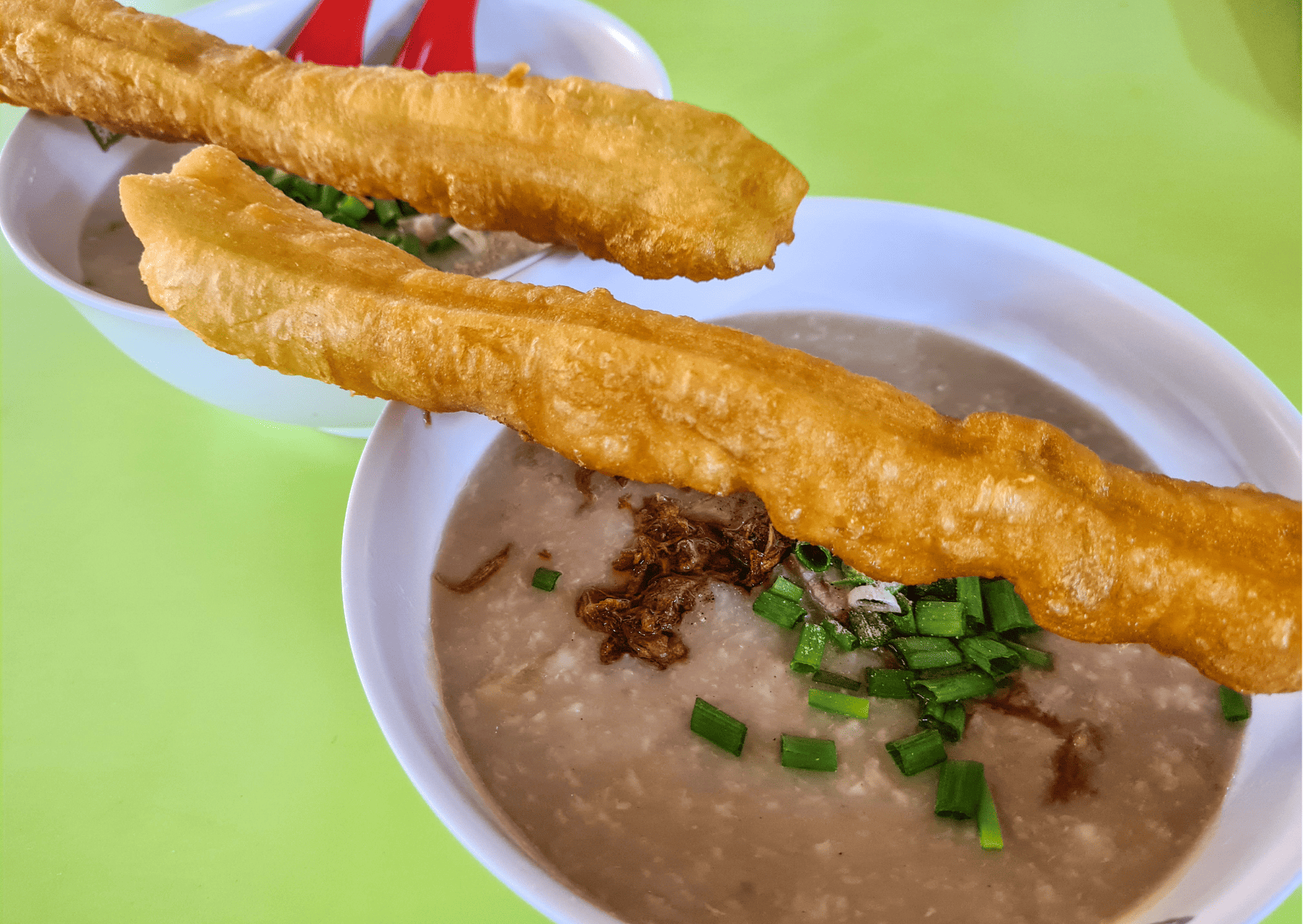
Congee and Youtiao Congee known in China as Zhou, is a slow-cooked rice porridge that serves as a staple breakfast food. The rice is simmered for several hours with plenty of water until it breaks down into a creamy, hearty consistency. This dish is often eaten plain but can be flavored with a variety of condiments like pickled vegetables, fermented tofu (known as “fu ru”), salted duck eggs, or thousand-year-old eggs. Congee is a versatile dish and can also be cooked with meat, seafood, or beans for added flavor and nutritional value.
Accompanying the congee is often a pair of Youtiao, or Chinese fried dough. Youtiao is a light, airy strip of dough that is deep-fried until golden brown. The result is a crispy exterior and a soft, chewy interior. The Youtiao is typically cut into manageable lengths and then dipped into the Congee, adding a delightful contrasting texture to the creamy porridge.
Japan: Asa-Gohan
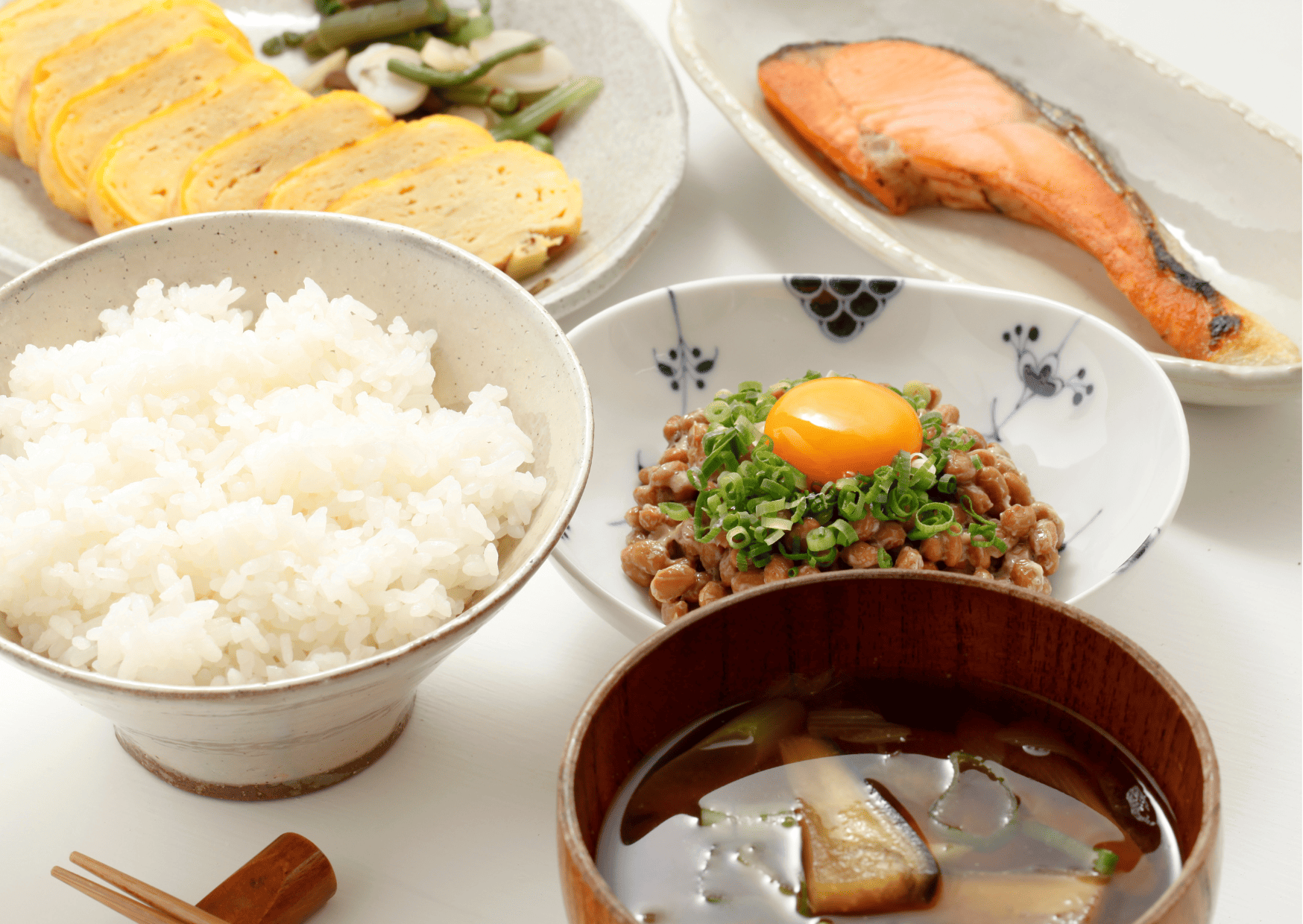
Asa-Gohan, the traditional Japanese breakfast, is a study in balance and simplicity, reflecting the broader principles of Japanese cuisine. It typically consists of several small dishes. The main dish is a bowl of steamed rice, which is often paired with Miso soup, a warm, savory soup made from fermented soybean paste, dashi (a type of broth), and often containing tofu and green onions.
A small portion of grilled fish is another common component, adding a source of protein. Tamagoyaki, a sweet and savory rolled omelette, is also commonly served. For sides, there might be some pickled vegetables known as tsukemono, and a small sheet of nori (seaweed), which can be torn and wrapped around rice. Another distinctive part of a traditional Japanese breakfast is natto, fermented soybeans that are known for their powerful smell, unique texture, and strong flavor, along with their health benefits.
South Korea: Dak Juk and Banchan
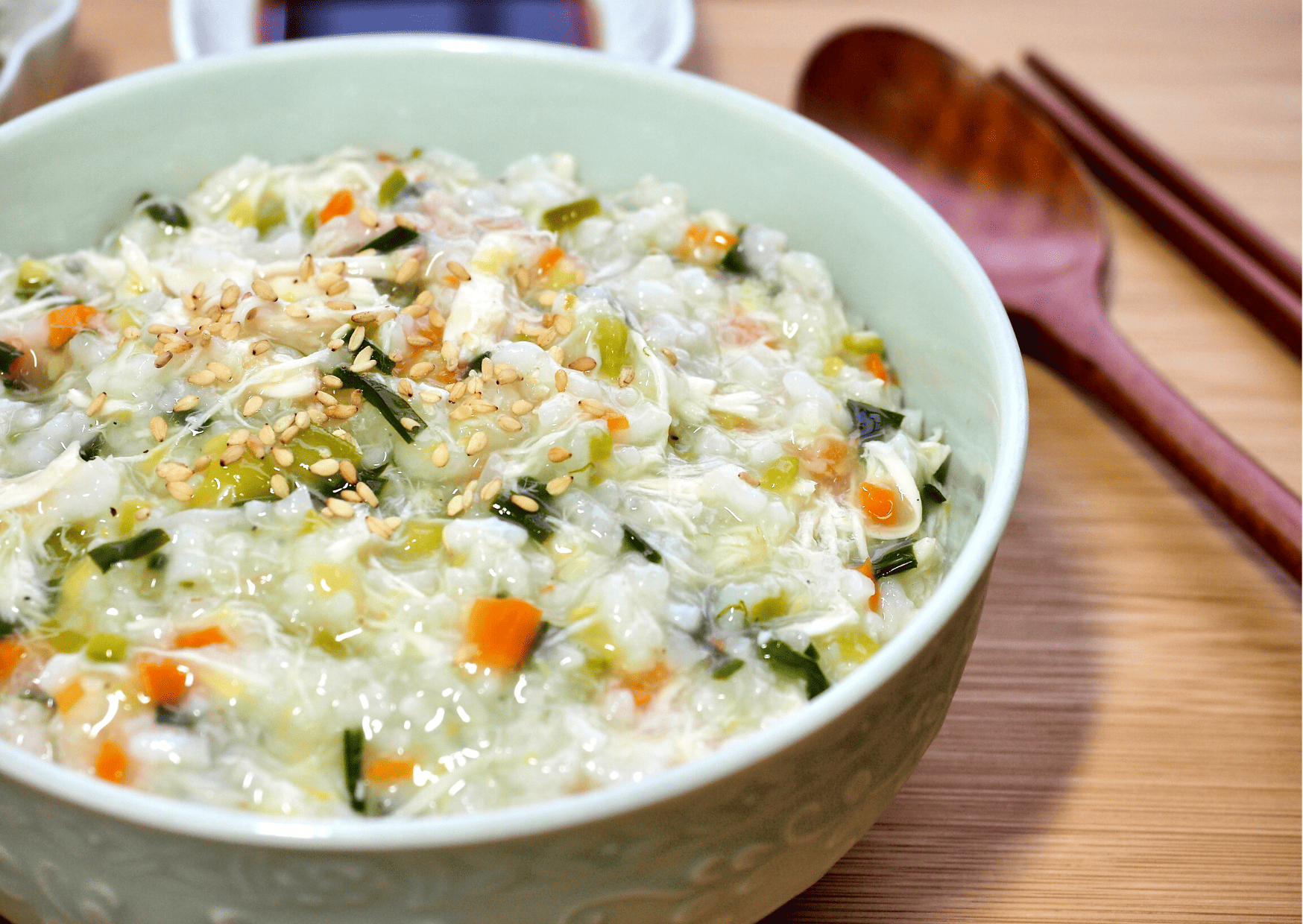
The South Korean breakfast might revolve around Juk, a Korean variant of rice porridge, similar to Chinese Congee. This hearty dish can range from plain to incorporating a variety of ingredients, such as abalone, pine nuts, pumpkin, and more. Depending on the ingredients used, the Juk can be a simple, comforting dish or a luxurious, flavorful one.
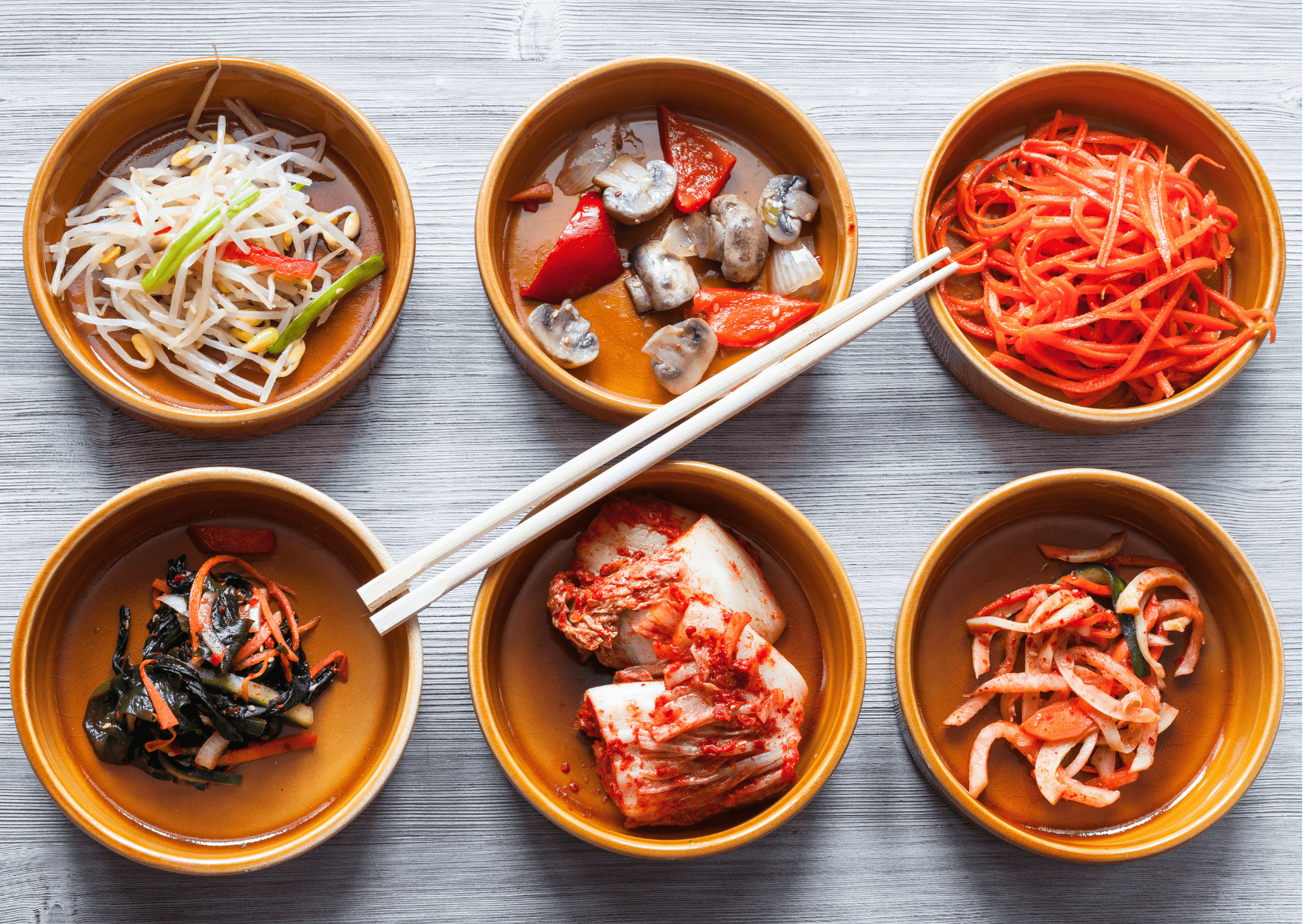
Accompanying the Juk is a selection of Banchan, or side dishes. These typically include Kimchi, fermented vegetables with a spicy kick, thanks to the addition of chili peppers and garlic. Other banchan can include seasoned soybean sprouts, stir-fried dried anchovy, and various namul (seasoned vegetable) dishes.
India: Idli, Sambar, and Chai

in South India, a common breakfast might include Idli, a type of steamed rice cake that is light, fluffy, and subtly sweet. Made from a fermented batter of ground urad dal (a type of lentil) and rice, the Idli is a nutritious, easily digestible food.
Accompanying the idli is Sambar, a flavorful and spicy lentil soup cooked with tamarind and a unique spice blend, and a variety of chutneys, such as coconut chutney and tomato chutney. The Idli is typically soaked in the Sambar and eaten with spoonfuls of the chutney.

Chai, a type of milk tea brewed with a variety of aromatic spices and herbs, is also a common part of breakfast. The warming drink is a delightful way to wake up the senses in the morning.
More Traditional Breakfast In Asia
Philippines: Tapsilog
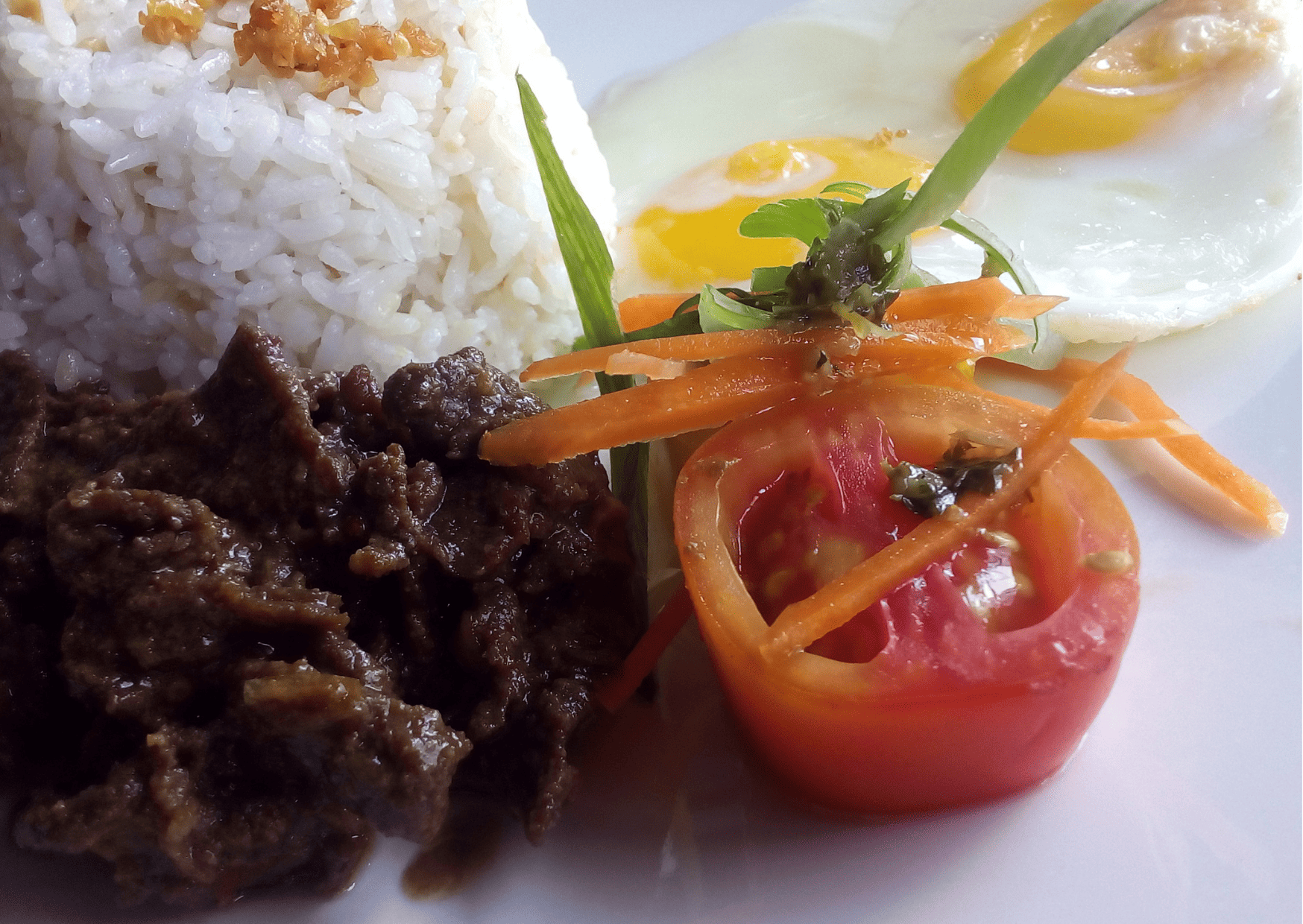
The Filipino breakfast is known for being hearty and heavy. A beloved breakfast dish is Tapsilog, a combination of tapa (cured beef), sinangag (garlic fried rice), and itlog (egg). The beef is marinated in a mixture of soy sauce, vinegar, garlic, and other spices before being cured, and then fried until it’s crispy around the edges. The sinangag is rice fried with plenty of minced garlic, adding a savory, fragrant element. The itlog is typically a fried egg, completing this satisfying breakfast plate.
Vietnam: Pho
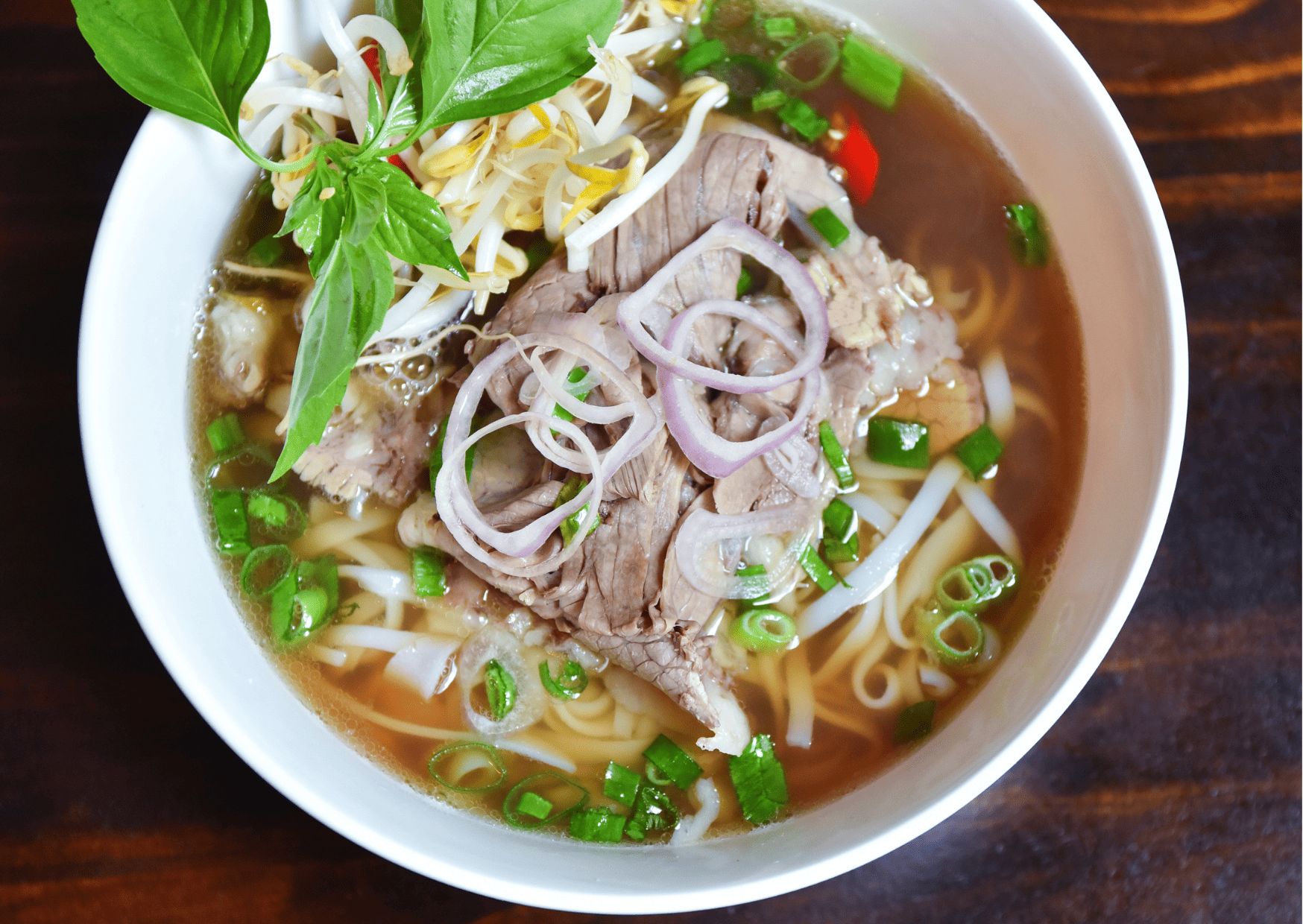
While Pho can be eaten at any time of the day in Vietnam, it’s a popular breakfast choice. This noodle soup dish consists of a hearty, fragrant broth, rice noodles, herbs, and meat, typically beef or chicken. The broth is what truly sets this dish apart, as it’s simmered for many hours with spices such as star anise, cardamom, and cinnamon. Fresh herbs, lime, chili, and bean sprouts are often added just before eating, adding a fresh, vibrant element to this comforting soup.
Thailand: Khao Tom
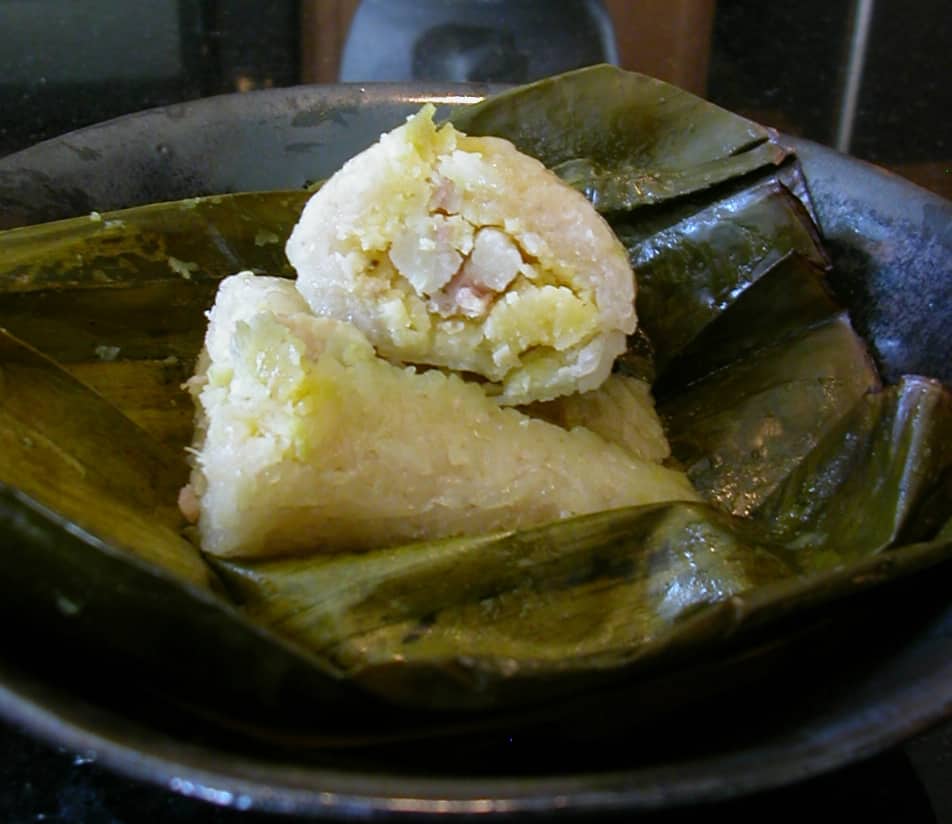
Khao Tom is a comforting Thai breakfast, typically enjoyed early in the morning. It’s a rice soup made with fragrant jasmine rice, simmered until soft in a savory broth, typically chicken or pork. The soup is then often filled with ingredients like minced pork, fish, or shrimp, creating a dish that is both light and filling. For garnishing, spring onions, deep-fried garlic, and cilantro are sprinkled over the top. Spicy and sour condiments, such as chili oil, fish sauce, and pickled lime, are served on the side, allowing diners to customize the soup to their taste. Khao Tom’s comforting warmth and adaptability have made it a beloved dish among Thais, providing a gentle start to the day.
Malaysia and Singapore: Nasi Lemak
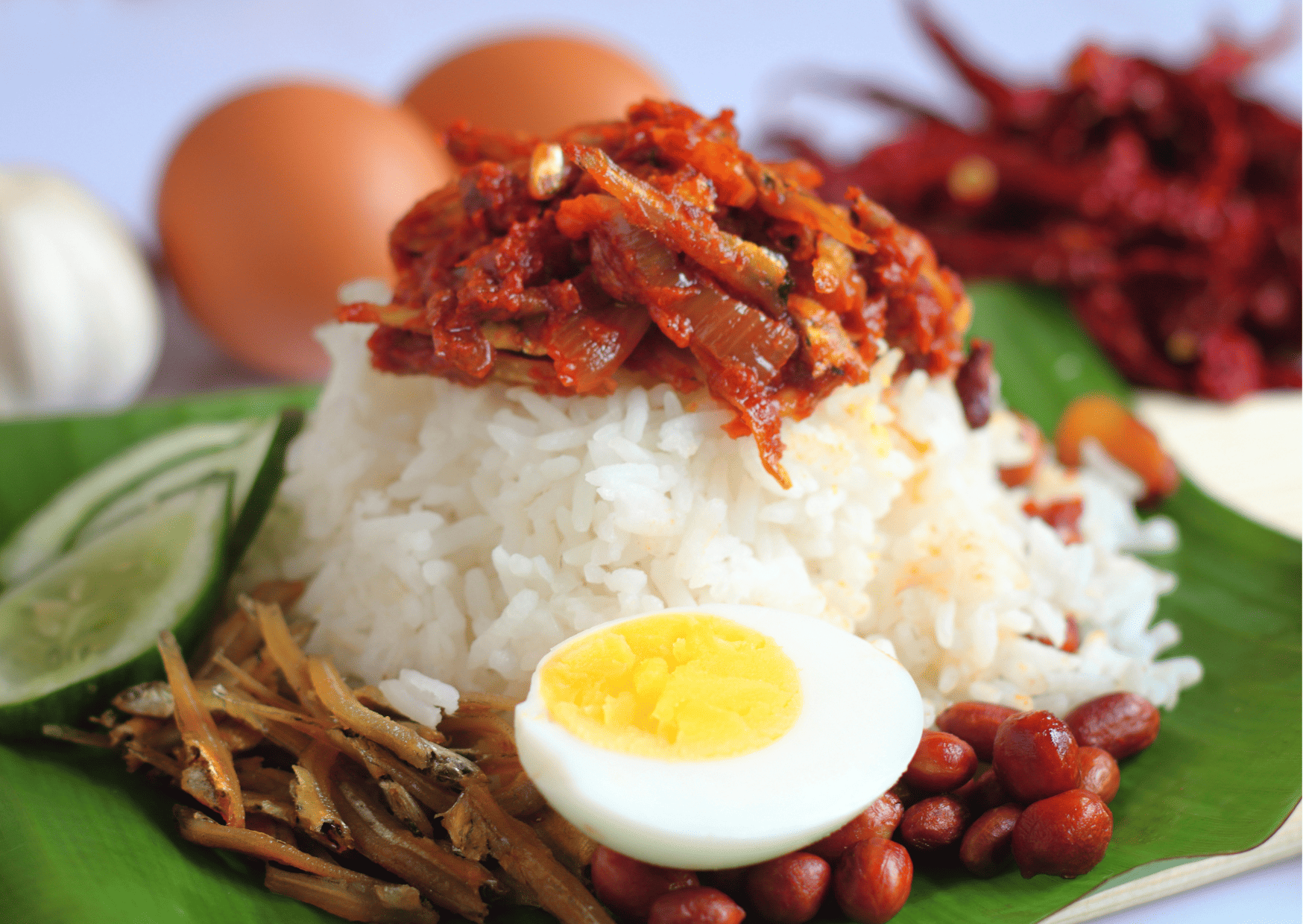
Nasi Lemak is a fragrant rice dish commonly eaten for breakfast in both Malaysia and Singapore. Its name translates to ‘rich (or creamy) rice’, referring to the method of cooking the rice in coconut milk and pandan leaves, which imbue it with a rich, aromatic flavor. The rice is traditionally served in a banana leaf, accompanied by a variety of sides.
These typically include sambal, a spicy and tangy chili paste; ikan bilis, or fried anchovies; and roasted peanuts for a crunchy contrast. Cool slices of cucumber and a boiled or fried egg are also common accompaniments. The combination of flavors – creamy, spicy, salty, with a hint of sweetness – make Nasi Lemak an incredibly satisfying dish to start the day.
Indonesia: Bubur Ayam

Bubur Ayam, or chicken porridge, is a common breakfast dish in Indonesia. It’s a savory rice porridge cooked until it has a soft, almost creamy texture. The dish is topped with shredded chicken that’s typically simmered in spices and herbs, providing a flavorful protein to the dish. On top, a sprinkling of sliced green onions and crispy fried shallots adds a textural contrast and a boost of flavor. To complete the dish, it’s served with kerupuk, a type of Indonesian cracker, and a spicy sambal on the side. Every spoonful of Bubur Ayam delivers a comforting harmony of flavors, from the savory porridge to the spicy sambal, making it a popular breakfast choice in Indonesia.
Myanmar: Mohinga

Mohinga is often considered the national dish of Myanmar and is a popular choice for breakfast. It’s a hearty soup made with rice noodles and a rich fish-based broth. The broth is infused with lemongrass, ginger, banana stem, and other aromatic herbs, providing layers of flavor. The soup is typically packed with chickpea fritters or gourd fritters that add a delightful crunch. Boiled eggs are a common addition, and fresh coriander leaves are sprinkled on top just before serving. With its combination of comforting broth, filling noodles, and flavorful additions, Mohinga provides a substantial and savory start to the day.
Taiwan: Soy Milk and Youtiao
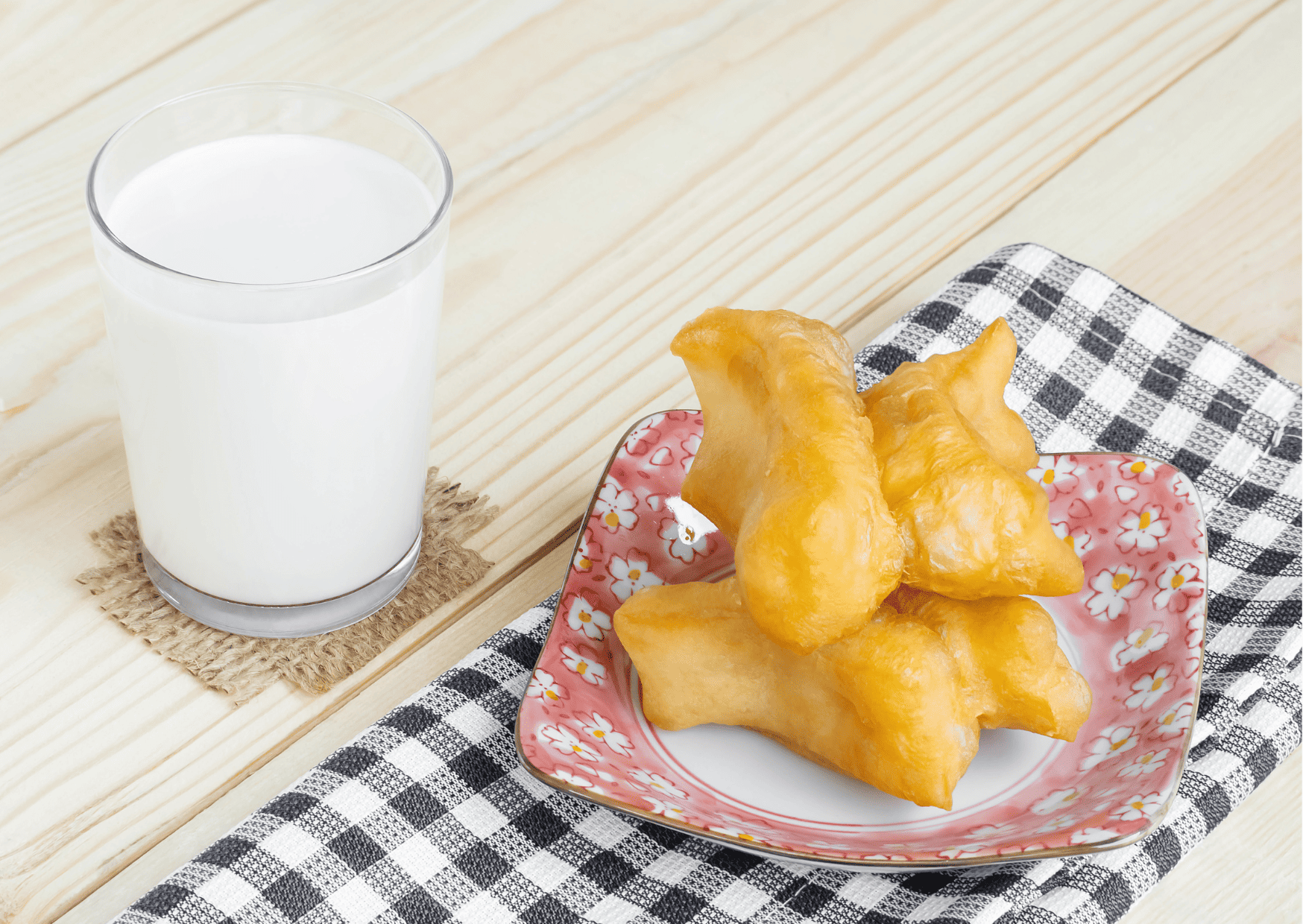
Taiwan’s traditional breakfast often features hot or cold soy milk, accompanied by Youtiao, also known as Chinese oil stick. This pairing provides a satisfying balance of sweet and savory. The soy milk, made from soaked and ground soybeans, is lightly sweetened, creating a refreshing and nourishing drink. The Youtiao is a deep-fried dough stick with a golden, crispy exterior and a soft, airy interior. It’s typically served whole and can be torn into pieces and dipped into the soy milk. Some also enjoy a savory version of soy milk soup, known as Dou Jiang, where the milk is curdled and served with vinegar, pickled vegetables, and often a touch of chili oil. This combination of crisp Youtiao and soy milk, sweet or savory, is a cherished breakfast tradition in Taiwan.
These breakfast dishes from Asia showcase the rich culinary traditions of each country, bringing together a plethora of tastes, textures, and ingredients that make each breakfast uniquely satisfying. From the comforting simplicity of rice porridge to the hearty combinations of meat, rice, and eggs, these traditional breakfasts offer an exciting start to the day.
Each of these traditional breakfasts tells a unique story about the culinary heritage of its country, offering a glimpse into the regional ingredients and flavors, local eating habits, and historical influences. Whether you’re a food enthusiast or a curious traveler, these breakfast dishes offer a delicious exploration of Asia’s diverse food culture.
The Asian Breakfast Palette
The traditional Asian breakfast palette is truly a feast for the senses. It’s a harmonious mix of flavors, textures, and aromas – sweet, salty, spicy, sour, umami; crunchy, soft, chewy; aromatic herbs, fragrant spices. Each dish tells a story of its cultural heritage, regional ingredients, and the ingenuity of generations of cooks.
Unifying Features and Influences
Though diverse, there are unifying features in Asian breakfasts. Rice, whether steamed, fried, or boiled into a porridge, forms the basis of many dishes. Fermentation, a preservation method, has a strong presence, giving us pickles, kimchi, natto, and more. Soups and broths also commonly appear, contributing to a hearty and nutritious start to the day.
Asian cuisine is shaped by a myriad of influences – geographic, historical, cultural, religious. Trade, colonization, migration, and neighborly exchanges over centuries have enriched its culinary landscape, making it a delicious melting pot of flavors and techniques.
Frequently Asked Questions
What’s a common breakfast in Asia?
Rice or rice-based dishes are common throughout Asia. This could be in the form of porridge (like congee or juk), steamed rice (as in Japan or Korea), or rice cakes (like idli in India).
Are traditional Asian breakfasts healthy?
Yes, many Asian breakfast dishes are balanced, offering a mix of carbohydrates, proteins, and vegetables. They often include fermented foods, which are great for gut health.
Is it difficult to make traditional Asian breakfast at home?
It can be, particularly if the dishes involve unique ingredients or lengthy preparation. However, there are simpler dishes and numerous resources online that can guide you through the process.
Final Thoughts
A traditional Asian breakfast is more than just fuel for the day. It’s a testament to the rich cultural tapestry of the continent and an invitation to savor the morning in a profound way. Whether it’s congee, nasi lemak, bubur ayam, asagohan and more, it’s something to be enjoyed.
The next time you sit down for breakfast, consider swapping your usual fare for one of these Asian delights. As they say in many parts of Asia, let’s eat breakfast like a king!
About the Author: Ruben, co-founder of Gamintraveler.com since 2014, is a seasoned traveler from Spain who has explored over 100 countries since 2009. Known for his extensive travel adventures across South America, Europe, the US, Australia, New Zealand, Asia, and Africa, Ruben combines his passion for adventurous yet sustainable living with his love for cycling, highlighted by his remarkable 5-month bicycle journey from Spain to Norway. He currently resides in Spain, where he continues to share his travel experiences alongside his partner, Rachel, and their son, Han.
